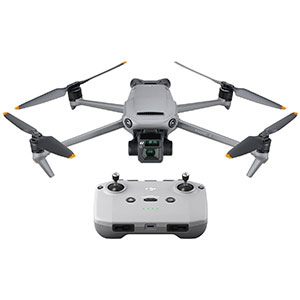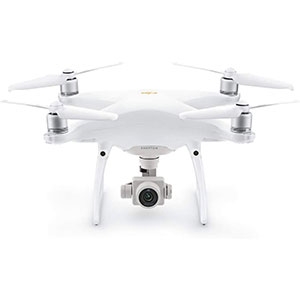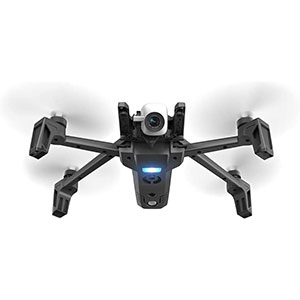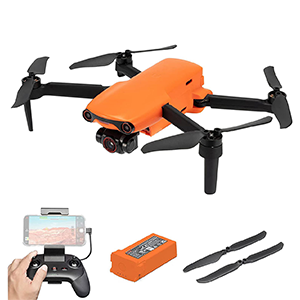As an affiliate, we may earn a commission from qualifying purchases. We get commissions for purchases made through links on this website from Amazon and other third parties.
We typically give the greatest consideration to factors like speed, range, endurance, and camera quality when reviewing a drone’s characteristics. How high a drone can fly doesn’t really matter to most people. To be completely honest, I haven’t given it much thought either. Until I watched this footage of a man taking his drone to an absurd altitude of 33 000 feet.
That made me wonder how high certain commercial drones could fly. Who among the drones has the highest goals? Will any of them reach space? Okay, so it’s virtually certain that the last one won’t happen, but I’ll still look for the commercial drones with the maximum altitude rating.
| Image | Product Name | Editor's Rating | Price |
|---|---|---|---|
 | DJI Mavic 3 | Check Price | |
 | DJI Phantom 4 Pro | Check Price | |
 | Parrot Anafi Work | Check Price | |
 | Autel Robotics EVO II | Check Price | |
 | DJI FPV Combo | Check Price |
Best High Altitude Drones Reviews
Comparison of the Best High Altitude Drones taking into account altitude, flight time, wind resistance, image and video quality, and bitrate.
1. DJI Mavic 3
This drone is of a very high caliber and altitude. Like all of DJI’s drones on this list, you can fly up to about 19,685 feet (or 6000 meters) above sea level. Even most mountains are smaller than 19,685 feet.
Mavic 3 provides stunning video to make the most of flying in the clouds. In order to create the Mavic 3, DJI took all it had learnt from the DJI Mavic 2 Zoom and Mavic 2 Pro, focusing on the second camera’s zoom lens, which has a 7x optical and 28x digital zoom. When approaching distant sights for a decent shot or to have a better idea of where to go, this conserves a significant amount of vital battery life.
Its Hasselblad camera can record in 5.1K or 4K at 50 or 120 frames per second and 20 MP still images. This is more than the average drone pilot will require, but the Autel Evo II can handle resolutions of up to 8K. Do bear in mind that the Mavic 3 has double the maximum bitrate at 200 Mbps, so if you’re considering video editing, it will be consuming more data (and producing larger files).
Long flight periods (officially 46 minutes) are something the Mavic 3 goes above and beyond with. You can fly for a long period of time if you bring two or three completely charged batteries.
Unfortunately, it can only withstand winds of up to 26 mph (43 kph), which is below average, so if you live somewhere with a lot of wind, keep that in mind. However, with an operational temperature range of 14° to 104° F (–10° to 40° C), it has a good range.
Pros
- 46 minutes is a fantastic flight time.
- 120 FPS in 4K video.
Cons
- Only 26 mph (43 kph) of wind resistance.
2. DJI Phantom 4 Pro
Although the Phantom 4 Pro V2.0 was rereleased in January 2020 and is an improvement over earlier models, many Phantom 4 Pro V2.0 owners like it over the more recent, more sophisticated Mavic 3.
It has a 19,685-foot (6,000-meter) maximum altitude, so it can fly as high as the greatest DJI drones, and it has a good 4K camera that can record aerial video at 30 frames per second. If you want to enjoy yourself while flying or use the DJI Goggles to frame your videos and images (DJI Goggles have just been phased out, but you can still find them readily), you can even link your Phantom 4 Pro V2.0 to them.
With a 30-minute flight, you’ll spend a lot of time in the air. Although wind resistance is only 22 mph (36 kph), it is still important to be aware of local wind speed averages. Its operating temperature range is also smaller than that of more modern drones at the lower end where it counts, 32° to 104°F (0° to 40°C), so check your local average conditions once more, taking into account seasonal variations.
Its obstacle detection and avoidance system is quite effective, and the OcuSync 2.0 system maintains a stable connection to your drone.
Being less expensive than the Mavic 3, the DJI Phantom 4 Pro V2.0 offers an edge. The amount you save is not a lot, but it may be used to purchase an item, like goggles.
Pros
- A top-notch drone all-around.
- Connectivity for first-person viewing glasses.
Cons
- 22 mph (36 kph) is the slowest wind resistance.
- At 32° (0°), the working temperature range’s lower boundary is relatively high.
3. Parrot Anafi Work
An excellent drone at an affordable price is the Parrot Anafi. Even if you won’t be able to fly at the highest altitudes with it, its height of 14765 feet (4500 meters) puts it above every high-altitude city in the world with a population of more than 75,000. Flagstaff, the tallest mountain in the US, is only 6,909 feet on average, and Santa Fe is only 7,198 feet. El Alto in Bolivia, which is the highest place on earth, is 13,615 feet high.
The Parrot Anafi is not for you if you’re interested in the highest mountain summits. The Parrot Anafi, however, will perform admirably when living in and going to high-altitude cities and lower mountain peaks. A considerable improvement over the DJI Phantom 4 Pro V2.0, it can withstand winds of up to 50 mph (80 kph) and 31 mph (50 kph) winds.
Its operational temperature range is the broadest on this list, spanning 14° to 112° F (-10° to +50°C), yet at the chilly end, where it counts, it performs just as well as the best. You’ll be happy you bought it, though, if you plan on visiting desert areas.
You’ll get a respectable 25 minutes of flight time (official flight time, so expect less) and 4K video at 24 frames per second, which is not the smoothest available but is more than sufficient for leisure use. Stills measure 21MP, which is marginally more than most of the competition.
This drone weighs only 320g. Although you’ll find it considerably easier to transport, you’ll still need to register it in the US.
Pros
- Excellent value for the money.
- Wind resistance is considerable for a drone traveling at 31 mph (50 kph).
Cons
- 4500 m is the lowest operable altitude, at 14765 feet.
4. Autel Robotics EVO II
16 times as many pixels are present in 8K as there are in 4K. When you zoom in to a quarter of an 8K video, the resolution drops to 4K, which is the best that other drones can muster.
8K at 25FPS is captured using the Autel Evo II. 48 MP stills are excellent. For somebody who is solely wanting to make photos, the visual quality on offer here is incredibly alluring.
It shoots better-than-average images and movies and matches the altitude of the finest DJI high altitude drones at 19,685 feet (6000 m). With an impressive flying time of 40 minutes, just behind the Mavic 3, you can record lengthy video clips with a lot of data at its 120 MPS bitrate.
With an operational temperature range of 14° to 104° F, it matches most of the competition perfectly.
(-10° to 40° C), hence its battery can function even at such a low temperature.
Evo II is excellent in the highlands because of its exceptional wind resistance. It will be difficult to find any consumer-grade high-altitude drone that can withstand gusts of more than 39 mph (62 kph). When flying an Evo II, you shouldn’t be unconcerned about wind speeds, but you almost can.
Evo II folds up easily. Twelve sensors are used in its omnidirectional object avoidance system to safeguard the drone. Its Dynamic Track 2.0 system intelligently follows a target even when it is in a forest.
Pros
- Camera 8K.
- Fantastic wind resistance at 62 kph (39 mph).
Cons
- Decent flying time, but not the longest
5. DJI FPV Combo
Aspire to avian flight? Contrary to camera drones, which are primarily designed to take pictures, first-person view (FPV) drones are made for enjoyment. To see things “from the drone’s eye view,” you will wear goggles.
This DJI drone can fly up to 19,685 feet (6,000 meters), which is incredible to see while wearing safety goggles.
Drones with FPV are typically faster. With a 150° wide field of view, the DJI FPV travels from 0 to 62 mph (100 kph) in just 2.0 seconds, providing an exhilarating, immersive experience. You’ll notice the pace because video is sent at a smooth 120 frames per second.
There are three flight modes with increasing levels of control for different skill levels. Increase the enjoyment with the optionally available motion-controlled joystick if you enjoy motion controls.
If you need to regain control, you may always use the emergency brake and hover command with just one button press, in addition to the superb obstacle recognition capabilities of the DJI FPV.
In order to keep each other safe, other aircraft transmit Automatic Dependent Surveillance-transmit signals that you can receive in your goggles.
The DJI FPV boasts excellent 4K 60FPS video capability and features designed for quick flight: Your films will be smooth and 4x slow-motion with distortion correction thanks to RockSteady EIS technology.
I adore the DJI Virtual Flight App as a feature. You can practice with only the controller and eyewear.
Pros
- Fast drone video features are built for.
- Outstanding safety features.
Cons
- 20-minute flight is a short duration.
Final Word
High altitude drones are a testament to human ingenuity and our unyielding pursuit of progress. These remarkable machines have elevated aerial exploration to new heights, offering breathtaking views and unlocking endless possibilities. With their advanced technology, robust design, and exceptional performance, the best high altitude drones have become indispensable tools for industries ranging from photography and filmmaking to scientific research and environmental conservation.
As we continue to push the boundaries of what is possible, high altitude drones will undoubtedly soar even higher, shaping the future of aerial innovation and inspiring us to reach for the skies.
